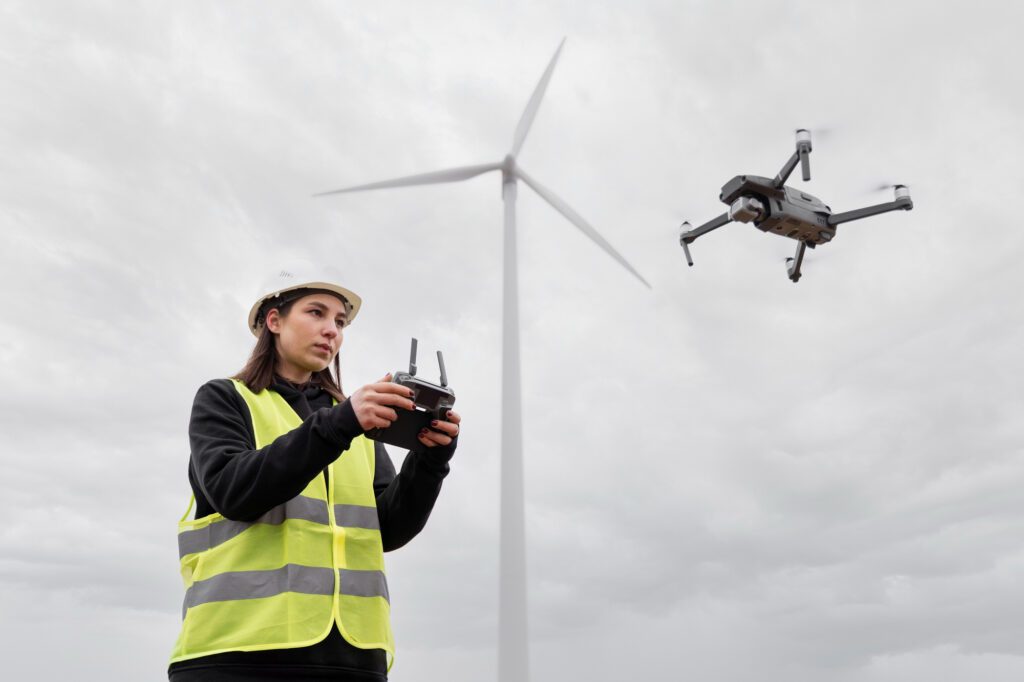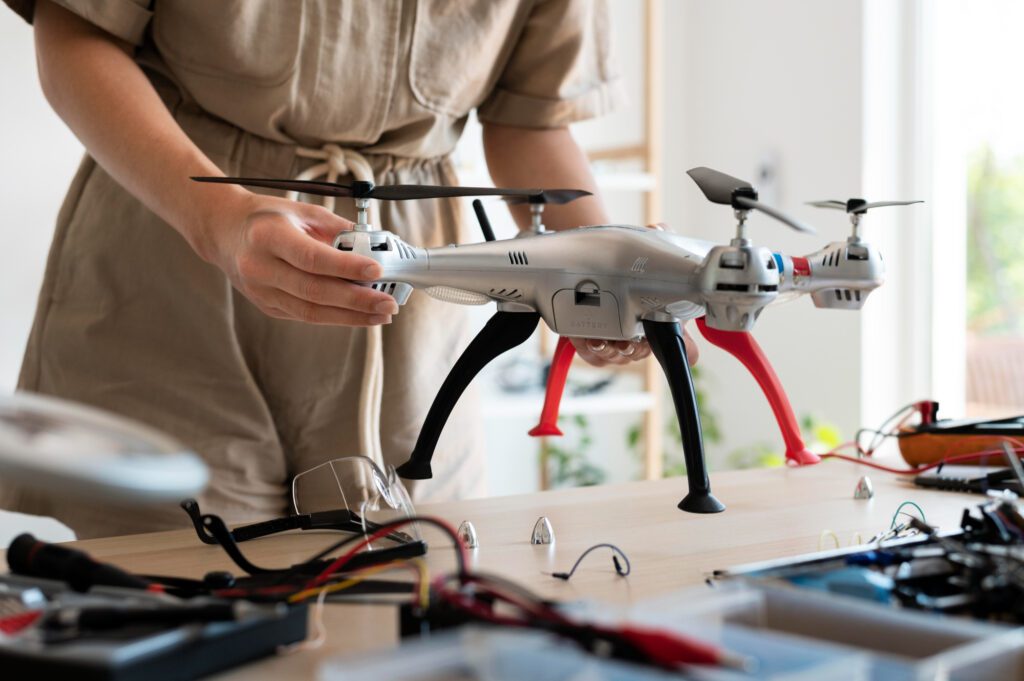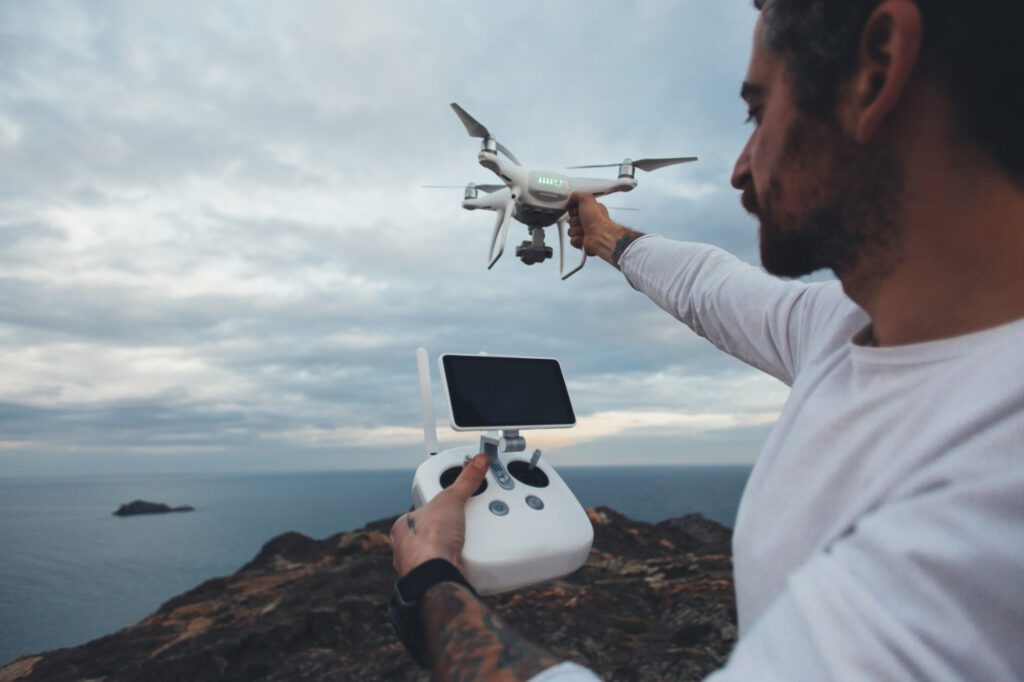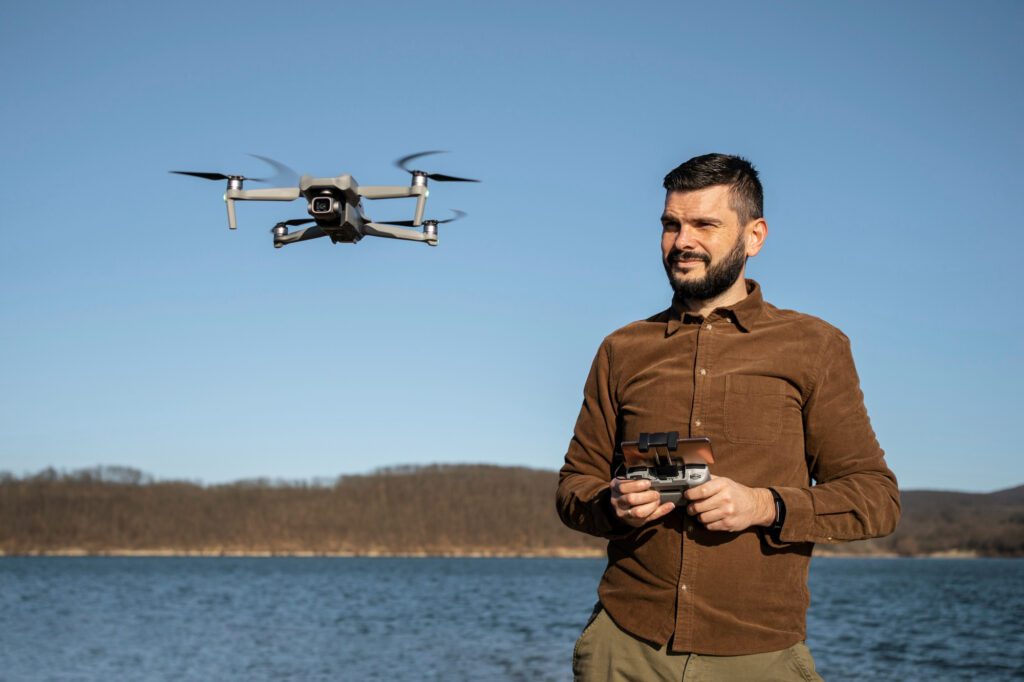With the increasing use of drones in industries like agriculture, filmmaking, security, and delivery services, the demand for skilled drone technicians is rising fast. If you’re enthusiastic about technology and looking for a practical, high-demand job, becoming a drone technician could be the perfect path for you.
What Does a Drone Technician Do?

A drone technician works with unmanned aerial vehicles (UAVs), handling tasks like building, maintaining, diagnosing issues, and performing repairs to keep them running smoothly. They play a key role in making sure drones operate safely and effectively, whether they’re used for business, industrial tasks, or recreational flying.
Key responsibilities include:
- Inspecting drones for damage or wear
- Calibrating sensors and flight systems
- Repairing motors, propellers, and electronic components
- Updating firmware and software
- Running diagnostic tests and documenting issues
- Providing technical support to drone operators
As drone usage grows, so does the need for skilled technicians who can keep them airborne.
Read more: How to Start a Career as a Solar Panel Installer in 2025
Step 1: Understand the Role and Requirements
Before jumping into training, it’s important to understand what the job involves. As a drone technician, you’ll need:
- Strong attention to detail
- Good hand-eye coordination
- Basic knowledge of electronics
- Problem-solving skills
- Comfort working with small tools and circuitry
You’ll often work in labs, workshops, or on-site at commercial projects. Flexibility and adaptability are key.
Step 2: Get Your High School Diploma or Equivalent
Most employers expect you to have at least a high school diploma or a GED to qualify for the role. Focus on subjects like:
- Physics
- Mathematics
- Computer science
- Mechanical engineering
These subjects provide a good foundation for understanding the systems inside drones.
Read more: How to Build a Personal Brand That Gets You Hired in 2025
Step 3: Enroll in a Drone Technician Training Program

Next, you’ll need formal training. Many technical colleges and online platforms offer drone repair or UAV maintenance programs.
Some great training options include:
- Drone Launch Academy: Online courses in drone repair and FAA Part 107 prep.
- Unmanned Vehicle University: Certificate programs in UAV maintenance and operations.
- Embry-Riddle Aeronautical University: Provides advanced courses in drone systems and avionics.
- Coursera and edX: Host related courses on electronics, mechatronics, and drone technology.
These courses teach you everything from how to solder microchips to troubleshooting flight controllers. Choose a program that includes hands-on training will give you a significant edge in the job market.
Step 4: Get Certified
Though not always required, certification increases your credibility. The most recognized certification in the U.S. is the FAA Part 107 Remote Pilot Certificate, which is necessary if you want to operate drones commercially.
Here’s how to get it:
- Study using materials from FAA.gov
- Enroll in a prep course at Pilot Institute or Drone Pilot Ground School
- Pass the FAA knowledge test
Other certifications to consider:
- CompTIA A+ (for general electronics)
- IPC Soldering Certification (for working with circuits)
- Certified Drone Mechanic (CDM) programs through various online academies
Read more: How to Become a Blockchain Developer (Step by Step Guide) in 2025
Step 5: Gain Hands-On Experience

You can only learn so much from books and videos—practice matters. You should:
- Buy an affordable drone kit to assemble and repair
- Volunteer or intern with local drone services or tech repair shops
- Join online communities like DIY Drones or DroneDeploy Forum
You can also freelance on Upwork and Fiverr, providing drone repair, troubleshooting, or custom build services.
Step 6: Build an Outstanding Portfolio
Document your work. Take pictures, write case studies, and share repair logs. Create a digital portfolio to showcase:
- Before and after repair images
- Drone customizations you’ve completed
- Success stories from clients
Post these on your LinkedIn profile or your personal website to gain traction and attract potential employers or clients. Your portfolio is your best marketing tool in this hands-on industry.
Read more: Top 7 Industries Hiring the Most in 2025 (And How to Get a Job in Them)
Step 7: Find a Job or Start Freelancing
With the right skills and certifications, you’re ready to work. Here’s how to land your first role:
Job Boards:
Search for titles like:
- Drone Repair Technician
- UAV Maintenance Technician
- Drone Assembler
- Field UAV Support Engineer
Freelancing Platforms:
If you prefer self-employment, create profiles on:
- Upwork: Offer drone repair, consulting, and maintenance.
- Fiverr: Create gigs for firmware updates, hardware repair, and drone customization.
- LinkedIn: Use the “Open to Work” tag and connect with drone startups, videographers, and survey companies.
Working as a freelancer lets you pick the projects you’re passionate about while building valuable connections along the way. Many drone technicians eventually transition into running their own repair businesses.
Step 8: Stay Updated and Specialize

Drones grow quickly. To stay competitive:
- Subscribe to channels like Painless360 or DroneU
- Take regular online courses from Udemy or Skillshare
- Attend drone expos and tech events to network with professionals
As you grow, you can specialize in:
- Military drones
- Agricultural UAVs
- Commercial fleet maintenance
- Racing drone customization
Specializing can increase your earning potential and make you more attractive to specific industries.
Career Growth and Salary Potential
As of 2025, the average salary of a drone technician ranges between $45,000 and $70,000 per year, depending on your experience, certifications, and location. With advanced skills, many technicians become drone engineers, field supervisors, or even start their own drone businesses.
According to ZipRecruiter, top earners in this field can make up to $90,000+ annually, especially in industries like defense, energy, and surveying.
There is also international demand for drone repair experts, particularly in countries investing heavily in tech and surveillance infrastructure.
Conclusion
Becoming a drone technician is a smart career move if you enjoy working with your hands, solving technical problems, and want to be part of a fast-growing industry. From training and certification to hands-on experience and freelancing, you can build a successful, future-proof career in 2025 and beyond.
The drone industry isn’t just about flying—it’s about keeping the technology in the air, and that’s where you come in. So gear up, start learning, and take off toward your new profession today.


